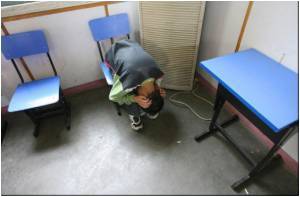
Identified more than a decade ago by Richard L. Huganir, professor and director of the Solomon H. Snyder Department of Neuroscience at the Johns Hopkins University School of Medicine, and a Howard Hughes Medical Institute investigator, GRIP1 regulates how fast receptors travel to a cell's surface, where they are activated by a brain-signaling chemical called glutamate, allowing neurons to communicate with one another.
The new study, which tracked two versions of GRIP1 in the genomes of 480 people with autism, and lends support to a prevailing theory that autism spectrum disorders (ASD), molecularly speaking, reflect an imbalance between inhibitory and excitatory signaling at synapses.
Using 10 mice genetically engineered to lack both normal and mutant GRIP proteins, researchers watched what happened when each animal was put into a box where it could choose between spending time with a mouse it hadn't encountered before, or an inanimate object. They compared the behaviors of these mice with 10 normal mice put into the same social situation. Mice lacking both GRIP1 and GRIP2 spent twice as much time as wild-type (normal) mice interacting with other mice as they did with inanimate objects.
"These results support a role for GRIP1 in social behavior and implicate its variants in modulating autistic behavior," Wang said.
Finally, the team looked at the behavioral analyses of individuals in two families, each with two autistic brothers, and correlated their scores on standard diagnostic tests that assessed social interaction with their genotypes for GRIP1 variants.
Advertisement
In a second family, the autistic brother with one copy of the GRIP1 variant had lower social interaction scores than his autistic sibling without a GRIP1 variant.
Advertisement
The study was published in the Proceedings of the National Academy of Sciences.
Source-ANI











